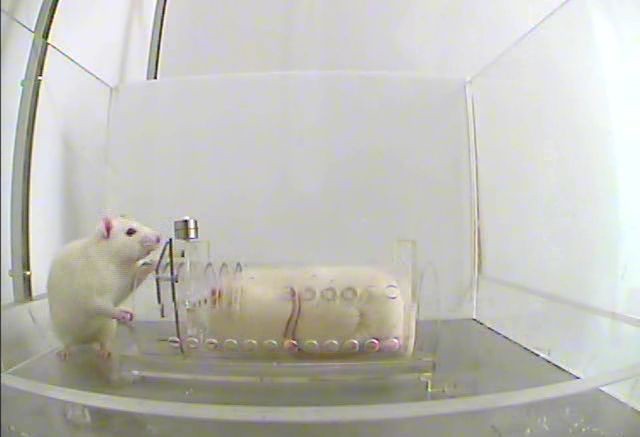Rats free each other from cages
Following a two-week introduction period, pairs of rats were put inside an arena. One was trapped inside a central restrainer, while the other roamed free in the larger space. By day six or seven, on average, the roaming rat learned to free the trapped rat. The free rats seldom opened empty containers or those containing a toy rat.
Although fewer in number, all the female rats tested became door openers; whereas 30% of males never became door openers.
When chocolate was introduced to the mix, there was no difference in the time taken to free the trapped cage-mate, despite pitting freeing the trapped cage-mate against getting a tasty treat. Furthermore, the helper rats did not eat all the chocolate chips. Instead, they often allowed the trapped rats to eat some.
[...]
The real question, says Povinelli, is what is motivating the rats to free their cage-mates. “This paper has no ability to discern if the helper rats are distressed themselves and simply figure out a way to stop the irritation,” he says.
https://www.nature.com/articles/nature.2011.9603
#zwierzeta #zwierzaczki #szczury

Zaloguj się aby komentować
